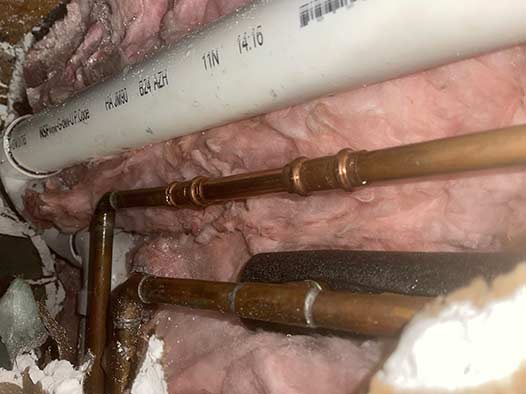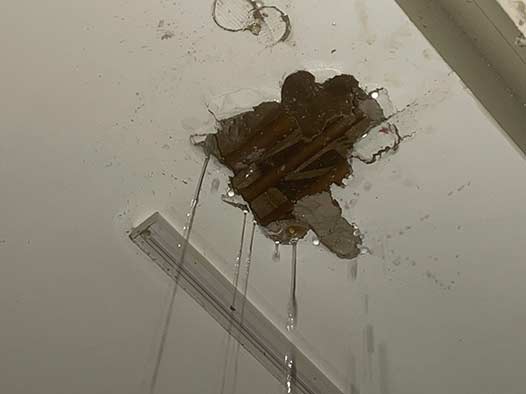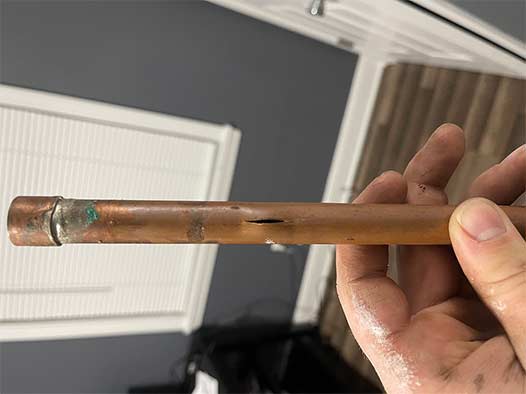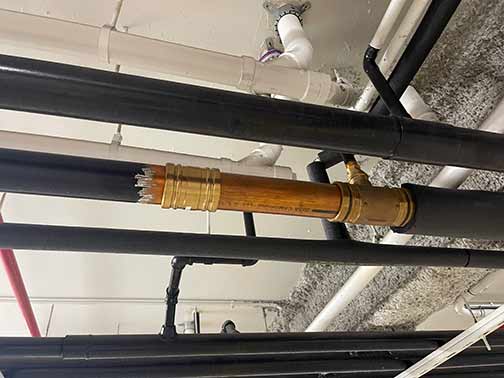
A burst pipe is a plumbing emergency that can cause significant damage to your home or property. It can lead to water leakage, flooding, and potentially costly repairs. Knowing the correct steps to take during a burst pipe can help you mitigate the damage and minimize the impact on your property. Below we will outline the essential steps to follow when facing a burst pipe situation.
Identify the Burst Pipe
The first step in dealing with a burst pipe is to identify the pipe that has ruptured. This can usually be done by visually inspecting the affected area for signs of water leakage or puddles. Common indicators of a burst pipe include water damage on walls or ceilings, pooling water on the floor, or a sudden drop in water pressure.
Turn Off the Water Supply
As soon as you notice a burst pipe, it is crucial to turn off the main water supply to prevent further flooding and damage. Locate the main water shut-off valve for your property and close it tightly to stop the flow of water. This valve is typically located near the water meter or where the main water pipe enters your home.

Common indicators of a burst pipe include water damage on walls or ceilings, pooling water on the floor, or a sudden drop in water pressure.
Open Faucets and Relieve Pressure
After shutting off the main water supply, it is important to open all faucets in your home, including sinks, showers, and bathtubs. This will help relieve the pressure in the pipes and allow any remaining water to drain out. By doing so, you can minimize the extent of water damage and potential flooding.
Drain the Pipes
In order to prevent further water leakage or build-up, it is essential to drain the pipes completely. To drain the pipes, start by flushing toilets and turning on outdoor faucets, if applicable. You can also use buckets or containers to collect any excess water. By effectively draining the pipes, you can prevent additional damage and make it easier for plumbers to repair the burst pipe.
Locate the Source of the Burst
Once the initial steps are taken to minimize damage, it is important to locate the source of the burst pipe. This may require further inspection or the assistance of a professional plumber. Identifying the exact point of the rupture will facilitate the repair process and ensure that the necessary steps are taken to prevent future problems.

Prompt action is crucial to prevent prolonged water exposure and subsequent issues such as mold growth or structural damage.
Contact a Professional Plumber
While you may be able to take some initial steps to mitigate the damage caused by a burst pipe, it is essential to contact a professional plumber as soon as possible. A qualified plumber has the expertise and equipment to effectively repair the burst pipe and evaluate any further damage. Prompt action is crucial to prevent prolonged water exposure and subsequent issues such as mold growth or structural damage.
Document the Damage
It is advisable to document the damage caused by the burst pipe for insurance purposes. Take photographs or videos of the affected areas before any repairs are made. This documentation will serve as evidence of the extent of the damage and help facilitate the insurance claim process. It is important to speak with your insurance provider to understand their specific requirements for documentation.
Initiate the Cleanup and Restoration Process
Once the burst pipe has been repaired, it is crucial to initiate the cleanup and restoration process. This may involve removing any standing water, drying out affected areas, and replacing damaged materials such as drywall or insulation. If the water damage is extensive, you may need to seek the assistance of professional water damage restoration services to ensure thorough and proper cleanup.
Prevention Measures for the Future
After experiencing a burst pipe, it is important to take preventative measures to reduce the risk of future incidents. Some steps you can take include insulating exposed pipes to protect them from freezing, regularly inspecting pipes for signs of wear or corrosion, and scheduling professional maintenance checks to identify potential issues before they escalate.
To Conclude
Dealing with a burst pipe can be a stressful and potentially damaging situation. However, by following the correct steps and taking prompt action, you can minimize the impact and ensure a swift and effective recovery. Remember to identify the burst pipe, turn off the water supply, relieve pressure, drain the pipes, locate the source of the burst, contact a professional plumber, document the damage, and initiate the cleanup and restoration process. Taking preventative measures for the future will further safeguard your property from burst pipe incidents. Stay vigilant, and in the event of a burst pipe, act quickly to mitigate the damage and protect your home.
